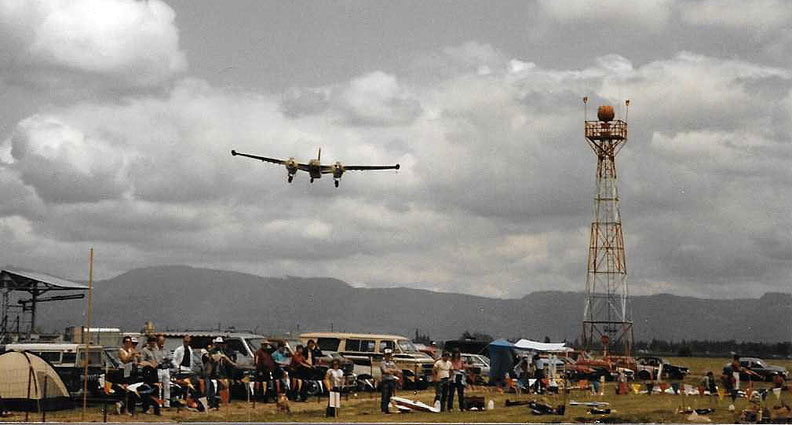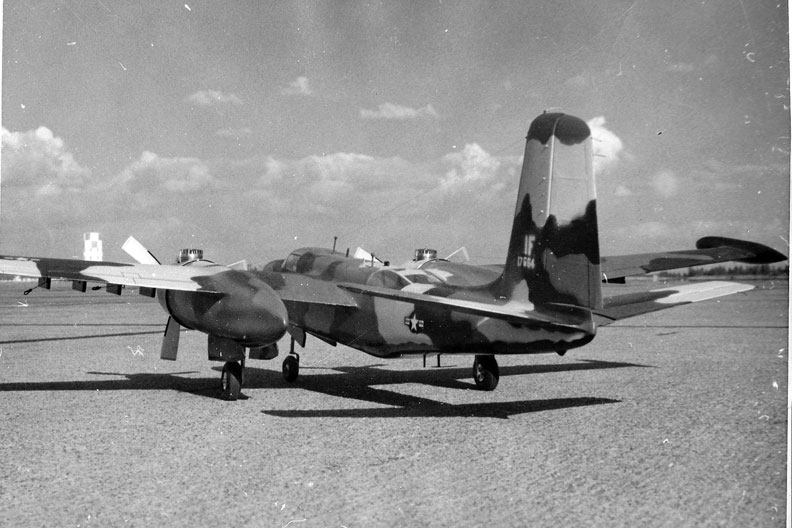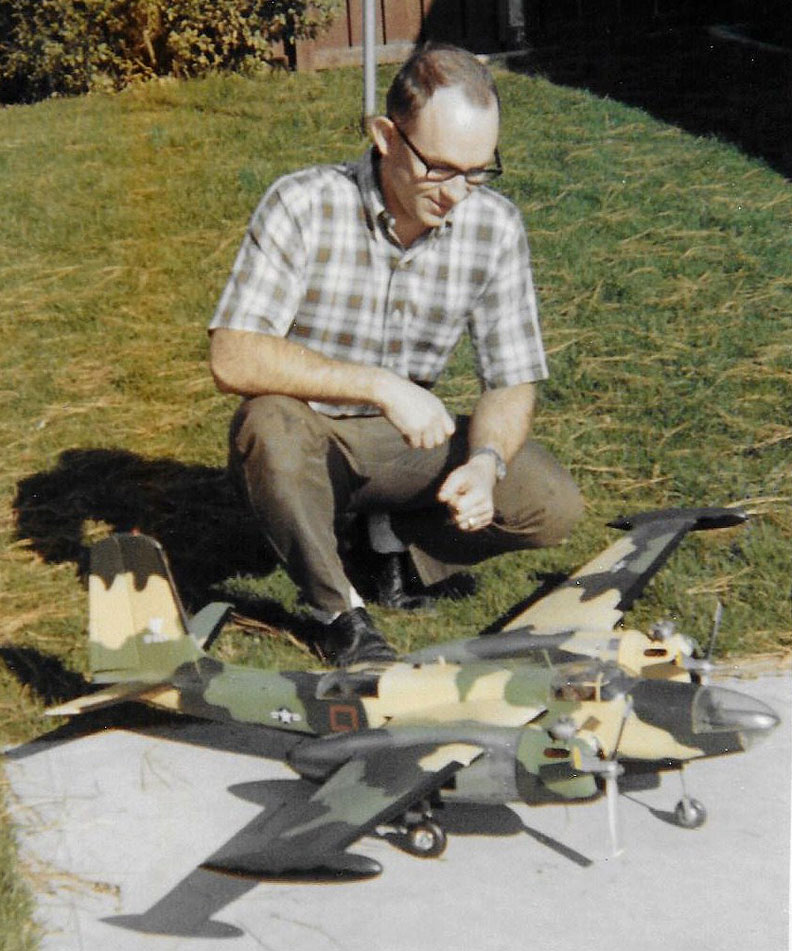Scale Matters
Orin Humphries' A-26 was a regular winner in scale contests in the Northwest for many years. Here it's seen in flight at the Northwest Regionals at the old Eugene Airport field (near the airport terminal, where the contest was held from 1972 until 1987. This photo is from the early 1980s. When the plane landed, Orin had a classy method of taxiing and shutting down -- without benefit of electronic gadgetry -- described below. All photos provided by Orin Humphries.
Secret of my A-26's No. 2 engine shutdown
By Orin Humphries
March 2016
Many will remember the almost 20-year reign of my twin-engine Douglas A-26 Invader Scale bird that flew in the Regionals and around the Northwest in times gone past. It went to the Nationals and the Canadian Nationals twice each. The model actually developed a loyal following as it kept on flying, never going the way of so many scale ships and crashing. Someone from the crowd at a contest would walk up to me in the pits and say, “This will be flight number so-and-so, right?” There are 109 flights in its logbook. The model still exists in storage, and after refurbishing it when my F-84 is flying later this year, the Oregon Air and Space Museum at the Eugene Airport has accepted it for their collection.
One of my scale operations in the Flight portion was to land to a stop at the feet of the judges, shut down No.2, and then taxi a lap on No.1. I know some wondered how I shut No. 2 down. The judges had looked inside the nacelle for some shutdown device and found nothing. I will tell you that it wasn't something I controlled directly; I could set up the condition wherein that would happen.
The secret lay in the plumbing in the fuel tanks. The tanks started out as 3-oz. stunt tanks. Their fuel pickups were halfway up in the tank for inverted operation. When No. 1's tank developed early rust, I had to remove and replace it. While doing that, I got this idea. I replaced the stunt pickup in the new tank with a bent tube that reached all the way down to the bottom of the tank. I left No. 2's pickup stock at halfway up on the mid-line.
During a normal flight, I knew that a little more than half of my fuel would always be gone. So long as the model was at least taxiing, the fuel in both tanks would be stood up at a slant inside the tanks on the outside of the circle. Both tanks would feed fuel as long as the plane was in motion until starvation. However, with over half the fuel gone in each, when I stopped at the judges' feet, the fuel in both tanks would go down level with the ground. Number 2's pickup would be sitting in air above the fuel in this condition and the engine shut down quickly, starved. I never pulled the throttles all the way back to Cutoff, just to Idle. The pickup in No. 1 was down in the fuel no matter where the remaining fuel was, so that engine continued to run. After taxiing a lap, I stopped at the judges' feet again, and pulled the throttles to Cutoff.
I plan on using this simple plumbing arrangement on the next project after my F-84, a project which will again be glo-fuel powered.
More photos of the A-26
Majestic in flight.
Realistic on the ramp.
The author with the A-26 in is heyday.
Flying Lines home page
Back to Scale Matters column main page
Back to Scale main page
This page was upated March 9, 2016




